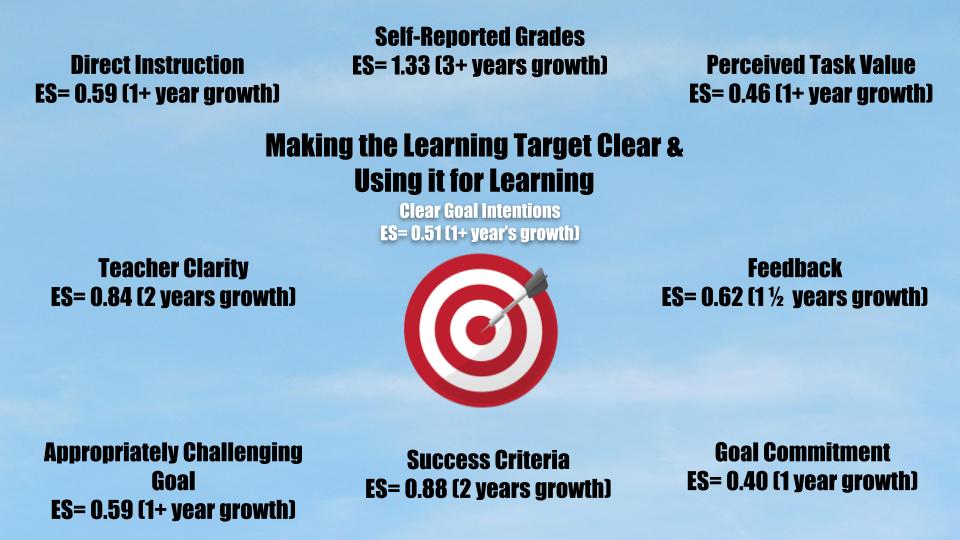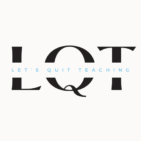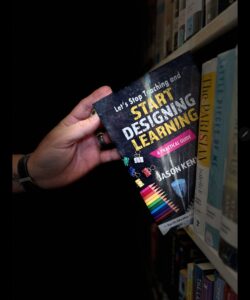Recently, a post of mine on Twitter got some attention. It was related to clarity in learning and the vast majority of opposing viewpoints centered around the use of Learning Targets. Many were concerned with primarily two things in relation to Learning Targets in the classroom: 1. It’s mandated use by administration. 2. The value of a student reciting the Learning Target when asked by someone. Let’s look at both and shed a little more light on the target.
Compliance is Not about Learning
First, many responses revolved around Learning Targets being a “box to check” mandate that administrators use for classroom visits, whether they be formal or informal. Many felt this was “just one other thing” being asked of them in the classroom, a “hoop to jump through” so to speak. They felt the use of Learning Targets (or any other thing posted as the goal for learning that day) was simply an exercise in obedience.
I’ll say this about compliance. It has no room in the building. Leaders, if you are mandating a practice in the classroom, you had better be sure about some things first. You must know that the expectation is about learning and supports learning. You must also know that the expectation is clearly defined, modeled and supported through evidence and training. It is no different for the use of Learning Targets in the classroom.
So what’s so great about Learning Targets? They drive every decision you make as a teacher before you enter the room, and they drive every action that will take place in the room with your learners. The problem is that many of us weren’t taught how to use them for learning. Just posting and pointing to them doesn’t work. That would be like us going to a home construction site. I walk over and place a hammer on top of a bundle of lumber. I point to the hammer and make sure everyone is aware of its presence. And that’s it. Now, do we expect a house to be built through that interaction? Of course not. So we shouldn’t expect learning to happen just by posting a Learning Target on the board either. Posting and pointing is about mandates and compliance, not learning.
Reciting the Target on Command
The second rebuttal around Learning Targets centered on the student in the room’s response to the questions, “What are you learning today?” Many took this question as a cue for the student to simply repeat the Learning Target. Some teachers admitted to making sure the kids in the room knew that if anyone came and asked them what they were learning, they were to respond with whatever the Learning Target said. Again, not really the intended use of the target in the first place. Teachers doing this can’t be blamed. They are either doing this because those leading make it more about the mandate than the meaning or they never really learned about how Learning Targets can be used for more effective learning in the classroom.
What Learning Targets CAN Do for Your Learners
Learning Targets drive every decision we make in the classroom. It’s the goal for the learning. It dictates what I need to provide instruction around. It drives my choice in what task I ask learners to complete to show evidence. It’s what we assess for understanding. It’s why the lesson of the day exists. So many other influences that hold years worth of growth potential for learning have targets as an essential ingredient:
Clear Goal Intentions: Effect Size= 0.51 (1+ year growth) When students link clear goal intentions to “implementation intentions”—or plans to overcome expected obstacles—they are more likely to achieve their goals. No target; no goal.
Success Criteria: Effect Size 0.88 (2+ years growth) The standards by which the project will be judged at the end to decide whether or not it has been successful. They are often brief, co-constructed with students, aim to remind students of those aspects on which they need to focus, and can relate to the surface (content, ideas) and deep (relations, transfer) learnings from the lesson(s). Can’t have a criteria for success if there is no target to shoot for in the first place.
Teacher Clarity: Effect Size= 0.84 (2+ years growth) Teacher clarity relates to organization, explanation, examples and guided practice, and assessment of student learning. It involves clearly communicating the intentions of the lessons and the success criteria. Clear learning intentions describe the skills, knowledge, attitudes, and values that the student needs to learn. Learning target required.
Direct Instruction: Effect Size= 0.59 (1+ year growth) Refers to instructional approaches that are structured, sequenced, and led by teachers. Direct instruction requires teachers to have clear learning intentions and success criteria, building a commitment and engagement among the students in the learning task; use modeling and checking for understanding in their teaching; and engage in guided practice so that every student can demonstrate his or her grasp of new learning by working through an activity or exercise under the teacher’s direct supervision. Can’t instruct with no goal present.
There’s many more influences affected by the presence and use of Learning Targets. But, if I could put the whole concept into a simple metaphor, it would be this. We can’t begin a journey if we do not first know our destination. We can’t continue on a journey to see how far we’ve come and how far we have left to go without a destination. We can’t complete the journey and look back at the successes and pitfalls along the way if we never know the destination. Make Learning Targets more than compliance. Put them to use. Make them work for learning. Otherwise, save the dry erase marker to write other things on the board.



